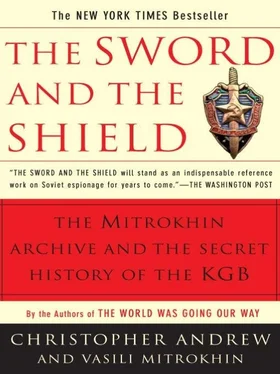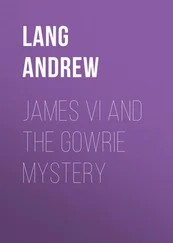THE CHIEF ADDITION to Soviet special tasks capability during the later Cold War was the creation of KGB special forces ( spetsnaz ) with the foundation of the Alpha group in 1974, on Andropov’s personal instructions. 79Intended for foreign operations and initially kept secret from all but a minority of FCD officers, the special forces grew steadily in numbers during the late 1970s. Their first major operation, by far the most important special action of the Andropov era, was the murder of President Hafizullah Amin of Afghanistan, who seized power in a blood-thirsty palace coup in September 1979. 80Cautious though Andropov had become in ordering assassinations, he convinced himself that in this case he had no option. Amin, he believed, was contemplating ending the Communist regime in Afghanistan and turning to the West. There were even reports, which Andropov appears to have taken seriously, that Amin was plotting with the CIA. 81As during the Czechoslovak crisis in 1968, 82Andropov took the lead in insisting on the enforcement of the “Brezhnev doctrine” which asserted Moscow’s right to prevent the defection of any member of the Soviet Bloc.
For the first time since its foundation, Department 8 of FCD Directorate S (Illegals) moved into the front line of KGB operations. Its plot to assassinate Amin, operation AGAT (“Agate”), formed part of a larger invasion plan. 83By late November, after Amin had demanded the replacement of A. M. Puzanov, the Soviet ambassador, Andropov and defence minister Ustinov, the two leading hawks in the Politburo, were agreed on the need for Soviet military intervention as well as the elimination of Amin. 84Early in December, Andropov sent Brezhnev a handwritten letter, reporting “alarming information [intelligence] about Amin’s secret activities, forewarning of a possible shift to the West,” bringing with it both the end of Communist rule and a catastrophic loss of Soviet influence. 85On December 8 Andropov and Ustinov jointly obtained Brezhnev’s approval for a draft invasion plan. 86
While Marshal Akhromeyev and the General Staff operations group in charge of the invasion established their headquarters near the Afghan border in Uzbekistan, the head of Directorate S, Vadim Vasilyevich Kirpichenko, and the head of Department 8, Vladimir Krasovsky, flew secretly into Kabul to supervise the overthrow of Amin. Dayto-day control of operation AGAT was entrusted to Krasovsky’s deputy, A. I. Lazarenko. A team from the KGB Seventh (Surveillance) Directorate flew in to monitor Amin’s movements. Meanwhile, elaborate attempts were made to avoid arousing Amin’s suspicions. His requests for military supplies were granted and two radio stations were constructed for him. On December 23, however, the KGB residency in Kabul reported that Amin’s suspicions had been aroused both by Western radio reports of Soviet troop movements and the frequent flights into the Soviet airbase at Bagram, outside Kabul. The main invasion began at 3 p.m. (local time) on December 25. 87
According to some accounts of the Soviet invasion, Amin was successfully duped into believing that the Red Army was arriving to provide him with “fraternal assistance” against anti-Communist rebels. 88The Kabul residency thought otherwise. On December 26 it reported to the Centre the publication of an article in the Englishlanguage Kabul Times entitled “The Will of the People will be the Deciding Factor.” Though the article made no direct reference to the massive arrival of Soviet troops, it ended with the slogan “Down with the interventionists!” The residency concluded:
As the Afghan press is subject to strict censorship, the article could not have been published without the sanction of Amin. The time chosen to print the article was not a coincidence. It was printed in an English language newspaper, a language which few Afghans understand. It was clearly intended to turn the pro-Western sections of the population against the Soviet troops and to enable the mass media in the West to make an immediate fuss about the Soviet intervention in Afghanistan. In general the article reflects the ambiguous and cautious attitude of Amin and his entourage towards the increased Soviet military presence in Afghanistan. 89
The assault on the presidential palace on December 27 was led by 700 members of the KGB Alpha and Zenith special forces, dressed in Afghan uniforms and traveling in military vehicles with Afghan markings. The signal for the attack to begin was the detonation of an explosive device concealed some days earlier beneath a tree in the central square of the capital. The palace guards, however, put up much stiffer resistance than had been expected, and over a hundred of the KGB troops were killed before the palace was taken and Amin gunned down. Among the casualties was the leader of the assault group, Colonel Grigori Boyarinov, commandant of the Department 8 special operations training school at Balashikha. 90
It was normal KGB procedure for the portraits of officers who fell in combat to be displayed in black frames at the Centre as a sign of mourning. On this occasion, since the fallen heroes of operation AGAT were so numerous, Andropov decided not to put their hundred portraits on display. Some of the survivors, however, were honored for their part in the operation. Kirpichenko was promoted from major-general to lieutenant-general, and soon afterwards made First Deputy Head of the FCD. Lazarenko was promoted from colonel to major-general. Leonid Aleksandrovich Kozlov of Department 8 was made a Hero of the Soviet Union. 91The head of Line N (Illegals Support) at the Kabul residency, Ismail Murtuza Ogly Aliev, was awarded the Order of the Red Star, as were an unknown number of the members of the assault group who had stormed the presidential palace. 92
Immediately after the storming of the palace, the exiled Afghan Communist and veteran KGB agent Babrak Karmal, who had been chosen by Moscow to succeed Amin, asked senior KGB officers in Kabul to assure Comrade Andropov that, as president, he would unswervingly follow his advice. He also called for the “severest punishment” of Amin’s former associates and all those who had opposed Soviet troops. Karmal was fulsome in his praise for the heroism shown by the KGB and other special forces who had stormed the presidential palace:
As soon as we have decorations of our own, we would like to bestow them on all the Soviet troops and Chekists [KGB officers] who took part in the fighting. We hope that the government of the USSR will award orders to these comrades. 93
The long-drawn-out Afghan War (which will be covered in volume 2 of this book) rescued Department 8 from the doldrums into which it had lapsed for most of the 1970s. In 1982 its special operations training school at Balashikha set up a “Training Centre for Afghanistan,” headed by V. I. Kikot, previously a Line F officer in Havana, who was well-informed on the Cuban experience of irregular warfare. 94Department 8 also made an intensive study of the methods used both by the Palestinians against the Israelis and by the Israelis against Palestinian camps in Lebanon. 95Balashikha made a significant, though unquantifiable, contribution to the increasing use of special forces and methods of terrorizing the population—among them incendiary bombs, napalm, poison gas, tiny mines scattered from the air, even booby-trapped toys which maimed children and so demoralized their parents. But though Soviet forces and the terror campaign drove a quarter of the Afghan population into refugee camps in Pakistan, they failed to win the war.
WITH THE INTENSIFICATION of the Cold War in the early years of the Reagan presidency and fears in the Centre that the new president was planning a nuclear first strike, Andropov became increasingly willing, both as KGB chairman and as Brezhnev’s successor from 1982 to 1984, to use, or connive in the use of, terrorism against United States and NATO targets. With Andropov’s knowledge (and doubtless his blessing), East Germany became what its last, non-Communist, interior minister, Peter-Michael Diestel, later called “an Eldorado for terrorists.” Among East Germany’s favorite terrorist groups was the West German Red Army Faction (RAF). Contemptuous of working-class reluctance to make a revolution and inspired by slogans such as “Don’t argue—destroy!,” the well-educated members of the RAF saw themselves as the militant vanguard of the deplorably inert proletariat, committed to the destruction of the “bourgeois power structures” of both the FRG and NATO. After a series of successful terrorist attacks in the mid-1970s, however, a grand offensive planned by the RAF in 1977 failed, and four of its leaders committed suicide in prison.
Читать дальше











